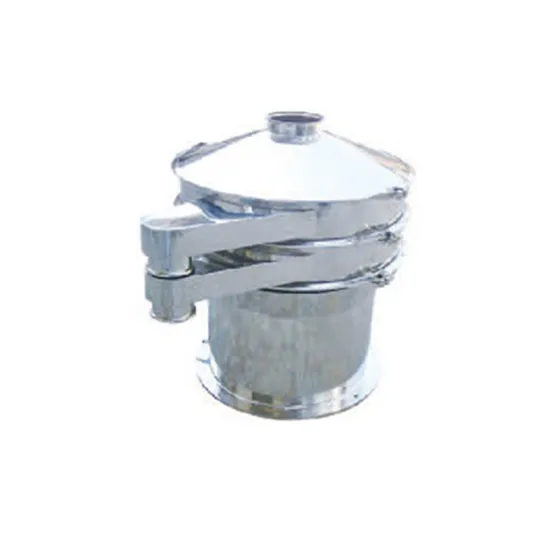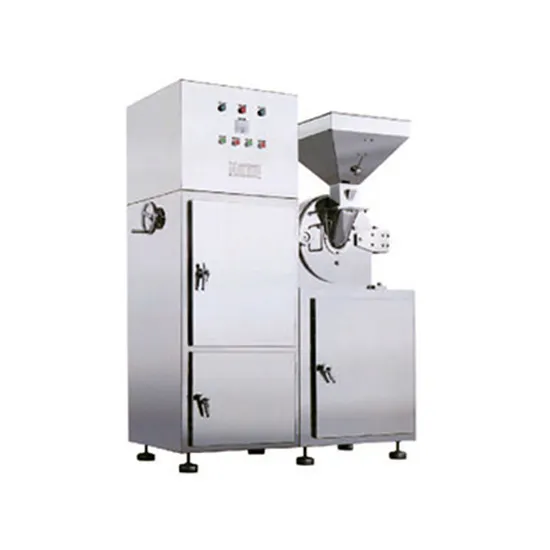NEWS
Achieve Efficient Granulation with Rotary Granulator - A Comprehensive Guide
Dec 04,2023
Table of Contents
1. Introduction: Understanding the Importance of Efficient Granulation
2. What is a Rotary Granulator?
3. Working Principles of Rotary Granulators
4. Advantages of Using a Rotary Granulator
5. Applications of Rotary Granulators in Manufacturing and Processing Machinery
6. Key Considerations for Choosing a Rotary Granulator
7. Frequently Asked Questions (FAQs)
8. Conclusion
1. Introduction: Understanding the Importance of Efficient Granulation
Efficient granulation plays a crucial role in the manufacturing and processing machinery industry. It involves the transformation of powders or fine particles into granules, which enhances ease of handling, transportation, and overall product quality. Achieving efficient granulation can lead to increased productivity, reduced production costs, and improved product performance.
2. What is a Rotary Granulator?
A rotary granulator, also known as a rotary drum granulator, is a specialized machine designed for granulating various materials. It consists of a rotating drum, which facilitates the granulation process by tumbling and agitating the materials. The drum's internal structure and specific settings allow for the controlled formation and sizing of granules.
3. Working Principles of Rotary Granulators
Rotary granulators operate on the principles of wet granulation, which involve the addition of a liquid binder to the powder or particle mix. The rotary drum rotates, causing the materials to collide and adhere to each other. As the granules grow in size, they are discharged through the drum's openings. The speed, angle, and internal design of the drum can be adjusted to achieve the desired granule size and shape.
4. Advantages of Using a Rotary Granulator
4.1 Enhanced Granule Uniformity: Rotary granulators ensure consistent granule size and shape, leading to better product quality and performance.
4.2 Improved Process Efficiency: The tumbling and mixing action of the rotary drum promotes uniform distribution of binder and thorough coating of particles, resulting in efficient granulation.
4.3 Versatility in Material Compatibility: Rotary granulators can handle a wide range of materials, including powders, particles, and even sticky or heat-sensitive substances, making them suitable for diverse applications.
4.4 Scalability and Production Flexibility: These granulators come in various sizes and configurations, allowing manufacturers to scale up or down production as needed and accommodate different production volumes.
5. Applications of Rotary Granulators in Manufacturing and Processing Machinery
5.1 Pharmaceutical Industry: Rotary granulators are widely used in pharmaceutical manufacturing for granulating active pharmaceutical ingredients (APIs), excipients, and other pharmaceutical powders. They help improve drug formulation, tablet compression, and dosage uniformity.
5.2 Chemical Industry: Rotary granulators play a vital role in the chemical industry, contributing to the production of fertilizers, detergents, pigments, and other chemical compounds. They enable the efficient granulation of raw materials, such as powders and prills, to enhance their handling and application properties.
5.3 Food and Beverage Industry: In the 香蕉传媒 and beverage industry, rotary granulators are utilized for granulating ingredients, such as flavors, additives, and nutritional supplements. These granules can be easily incorporated into various 香蕉传媒 products, including powders, beverages, and confectioneries.
5.4 Agricultural Industry: Rotary granulators are employed in the agricultural sector for granulating fertilizers and soil amendments. They help improve the distribution and effectiveness of nutrients, facilitating optimal plant growth and crop yields.
6. Key Considerations for Choosing a Rotary Granulator
6.1 Granulation Requirements: Assess your specific granulation needs, including desired granule size, shape, and flow properties, to select a rotary granulator that can meet these requirements.
6.2 Material Compatibility: Consider the characteristics of your materials, such as particle size, density, and moisture content, to ensure compatibility with the chosen rotary granulator.
6.3 Production Capacity: Determine the required production volume and rate to choose a rotary granulator with suitable capacity and throughput.
6.4 Equipment Design and Maintenance: Evaluate the ease of cleaning, maintenance requirements, and overall durability of the rotary granulator to minimize downtime and ensure long-term reliability.
7. Frequently Asked Questions (FAQs)
FAQ 1: How does a rotary granulator differ from other granulation methods?
FAQ 2: Can a rotary granulator handle heat-sensitive materials?
FAQ 3: What factors impact the granule size and shape in a rotary granulator?
FAQ 4: Are rotary granulators suitable for high-capacity production?
FAQ 5: How can I optimize the granulation process with a rotary granulator?
8. Conclusion
In conclusion, utilizing a rotary granulator in your manufacturing and processing machinery operations can significantly enhance granulation efficiency, resulting in improved product quality and productivity. By understanding the working principles, advantages, applications, and key considerations of rotary granulators, you can make informed decisions to optimize your granulation processes and achieve competitive advantages in your industry. Harness the power of rotary granulation and experience efficient granulation like never before.
1. Introduction: Understanding the Importance of Efficient Granulation
2. What is a Rotary Granulator?
3. Working Principles of Rotary Granulators
4. Advantages of Using a Rotary Granulator
5. Applications of Rotary Granulators in Manufacturing and Processing Machinery
6. Key Considerations for Choosing a Rotary Granulator
7. Frequently Asked Questions (FAQs)
8. Conclusion
1. Introduction: Understanding the Importance of Efficient Granulation
Efficient granulation plays a crucial role in the manufacturing and processing machinery industry. It involves the transformation of powders or fine particles into granules, which enhances ease of handling, transportation, and overall product quality. Achieving efficient granulation can lead to increased productivity, reduced production costs, and improved product performance.
2. What is a Rotary Granulator?
A rotary granulator, also known as a rotary drum granulator, is a specialized machine designed for granulating various materials. It consists of a rotating drum, which facilitates the granulation process by tumbling and agitating the materials. The drum's internal structure and specific settings allow for the controlled formation and sizing of granules.
3. Working Principles of Rotary Granulators
Rotary granulators operate on the principles of wet granulation, which involve the addition of a liquid binder to the powder or particle mix. The rotary drum rotates, causing the materials to collide and adhere to each other. As the granules grow in size, they are discharged through the drum's openings. The speed, angle, and internal design of the drum can be adjusted to achieve the desired granule size and shape.
4. Advantages of Using a Rotary Granulator
4.1 Enhanced Granule Uniformity: Rotary granulators ensure consistent granule size and shape, leading to better product quality and performance.
4.2 Improved Process Efficiency: The tumbling and mixing action of the rotary drum promotes uniform distribution of binder and thorough coating of particles, resulting in efficient granulation.
4.3 Versatility in Material Compatibility: Rotary granulators can handle a wide range of materials, including powders, particles, and even sticky or heat-sensitive substances, making them suitable for diverse applications.
4.4 Scalability and Production Flexibility: These granulators come in various sizes and configurations, allowing manufacturers to scale up or down production as needed and accommodate different production volumes.
5. Applications of Rotary Granulators in Manufacturing and Processing Machinery
5.1 Pharmaceutical Industry: Rotary granulators are widely used in pharmaceutical manufacturing for granulating active pharmaceutical ingredients (APIs), excipients, and other pharmaceutical powders. They help improve drug formulation, tablet compression, and dosage uniformity.
5.2 Chemical Industry: Rotary granulators play a vital role in the chemical industry, contributing to the production of fertilizers, detergents, pigments, and other chemical compounds. They enable the efficient granulation of raw materials, such as powders and prills, to enhance their handling and application properties.
5.3 Food and Beverage Industry: In the 香蕉传媒 and beverage industry, rotary granulators are utilized for granulating ingredients, such as flavors, additives, and nutritional supplements. These granules can be easily incorporated into various 香蕉传媒 products, including powders, beverages, and confectioneries.
5.4 Agricultural Industry: Rotary granulators are employed in the agricultural sector for granulating fertilizers and soil amendments. They help improve the distribution and effectiveness of nutrients, facilitating optimal plant growth and crop yields.
6. Key Considerations for Choosing a Rotary Granulator
6.1 Granulation Requirements: Assess your specific granulation needs, including desired granule size, shape, and flow properties, to select a rotary granulator that can meet these requirements.
6.2 Material Compatibility: Consider the characteristics of your materials, such as particle size, density, and moisture content, to ensure compatibility with the chosen rotary granulator.
6.3 Production Capacity: Determine the required production volume and rate to choose a rotary granulator with suitable capacity and throughput.
6.4 Equipment Design and Maintenance: Evaluate the ease of cleaning, maintenance requirements, and overall durability of the rotary granulator to minimize downtime and ensure long-term reliability.
7. Frequently Asked Questions (FAQs)
FAQ 1: How does a rotary granulator differ from other granulation methods?
FAQ 2: Can a rotary granulator handle heat-sensitive materials?
FAQ 3: What factors impact the granule size and shape in a rotary granulator?
FAQ 4: Are rotary granulators suitable for high-capacity production?
FAQ 5: How can I optimize the granulation process with a rotary granulator?
8. Conclusion
In conclusion, utilizing a rotary granulator in your manufacturing and processing machinery operations can significantly enhance granulation efficiency, resulting in improved product quality and productivity. By understanding the working principles, advantages, applications, and key considerations of rotary granulators, you can make informed decisions to optimize your granulation processes and achieve competitive advantages in your industry. Harness the power of rotary granulation and experience efficient granulation like never before.
More News









